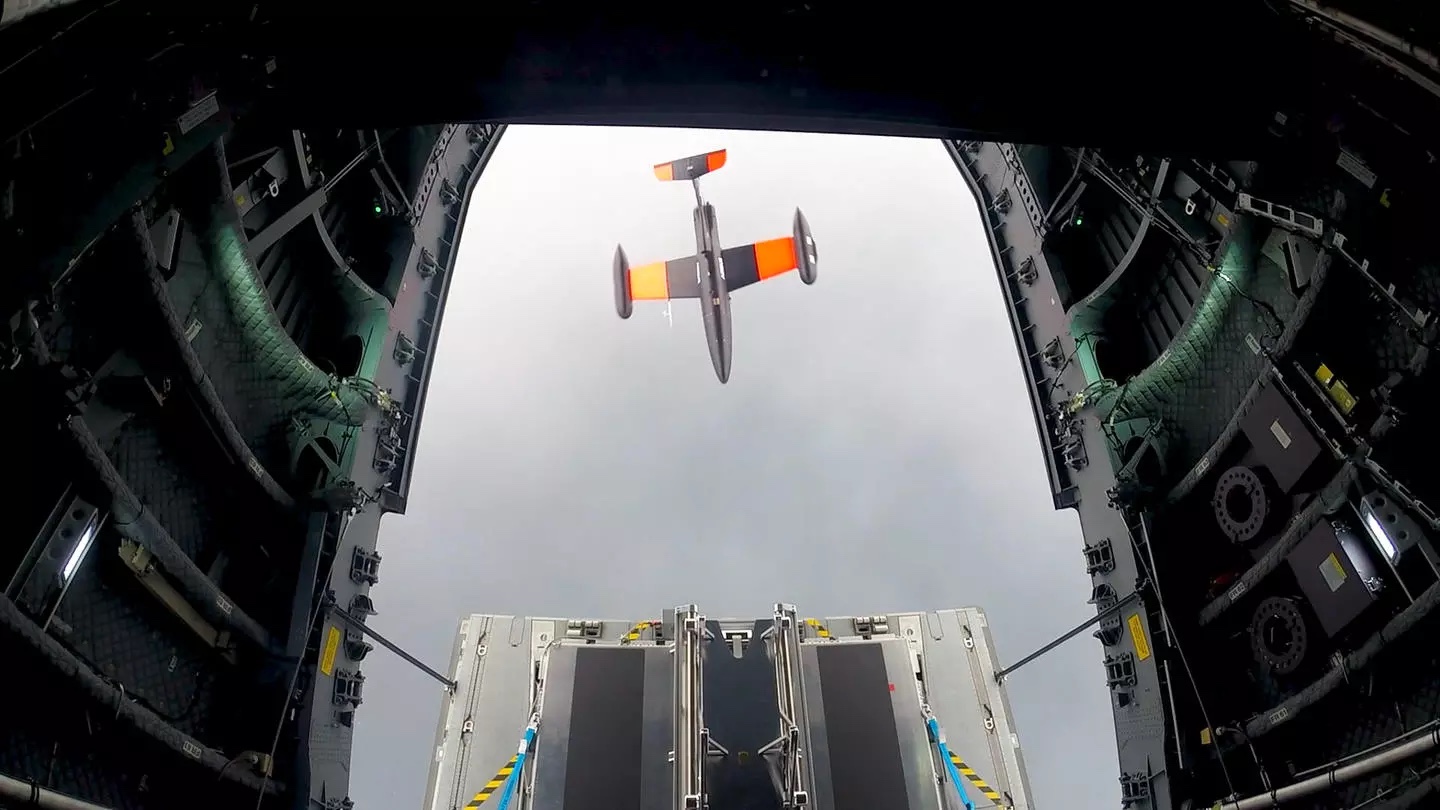
Armed forces in much of the world are developing small, uncrewed aerial assets to assist larger aircraft in military operation – including combat situations. European aviation giant Airbus is similarly working on what it calls Remote Carrier drones, and this month successfully tested them in two different scenarios.
The trials involved Airbus’ Remote Carriers, which are fixed wing, jet-propelled drones that look like mini fighters, and are intended to accompany and assist piloted aircraft in action. The UAVs are typically controlled remotely – in some cases from planes they are assisting – but can function with nearly full autonomy in particular circumstances.
Read: Airbus trials cargo drone designed to carry 250 kg over 300 km
Their development is a critical part of Airbus’ Future Combat Air System (FCAS), which is adapting to the shifting realities and practices in conflict – the current war in Ukraine providing examples of that – and anticipating and nurturing nascent technologies. Though highly sophisticated and effective, the Remote Carrier drones are far less expensive to produce and operate than crewed aircraft, and can be sacrificed if needed to assure mission success at minimal cost.
Airbus says Remote Carriers will be an important component of FCAS, with the mighty drones flying in support of piloted aircraft and their crews to fulfill operational objectives, and in carrying out critical roles as missions unfold.
The pair of trials Airbus conducted this month involved the launching of a Remote Carrier in mid-air by an A400M transport plane; and the deployment of the drones in simulated combat maneuvers accompanying jets and helicopters. The latter test was said to be the first of its kind in the world, with the mid-air release a major hurdle cleared in the planned use of the UAVs.
Large military transport planes like the turboprop A400M will carry the specialized craft as close to their areas of operations as possible, then release up to 50 smaller drones, or as many as 12 larger Remote Carriers. Though they can function with nearly total autonomy, the accompanying UAVs will be under human observation and control at all times.
The first trial involved an A400M releasing a Remote Carrier from its cargo hold using a launching system for the drone that Airbus developed in just six months. When the UAV descended a safe distance from the plane, it was powered on by onboard crew, who then transferred control of the craft to a ground team who flew and eventually landed it successfully.
Airbus developed and tested the mid-air launch system in partnership with Germany’s armed forces, and German companies who will also acquire the completed tech. The company called the result a major milestone for its future air system.
“The excellent collaboration with our German customer and partners on the A400M UAV Launcher campaign is further evidence of how the development of FCAS will take innovation and technologies to the next level,” said Airbus Defence and Space CEO Michael Schoellhorn. “FCAS as a system of systems is starting to take shape now.”
The simulated combat exercise using Remote Carrier drones was carried out with German and Finnish armed forces in what Airbus called a Multi-Domain Flight Demo.
Read: Airbus Zephyr’s US Army marathon flight ends hours shy of endurance record
In it, five of the UAVs flew ahead of piloted aircraft into designated enemy airspace to identify and transmit positions of mock ground-air missile units. The trailing fighter jets used the data from the advance drones to swoop into and takeout out those weapons without taking fire – and with a degree of precision that avoided collateral damage.
Once that was complete, ground forces requested close air support during a simulated commando strike of enemy divisions seeking to capture a high-value individual. An Airbus H145M helicopter provided that aerial backup, in part by controlling a Remote carrier drone from the craft to monitor developments on the ground, and relay reconnaissance data to leaders.
Airbus officials called both aspects of the trial “an overwhelming success,” noting the Remote Carrier drones responded perfectly to challenges in the tests that had been drawn from real-life combat situations from past years.
FTC: We use income earning auto affiliate links. More.



Comments